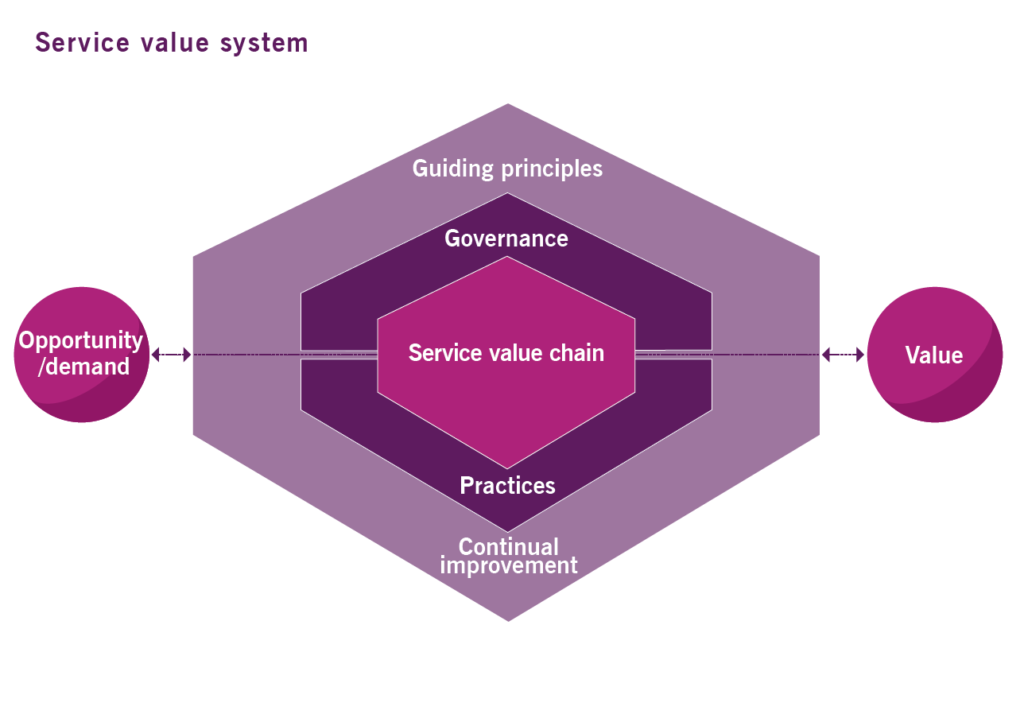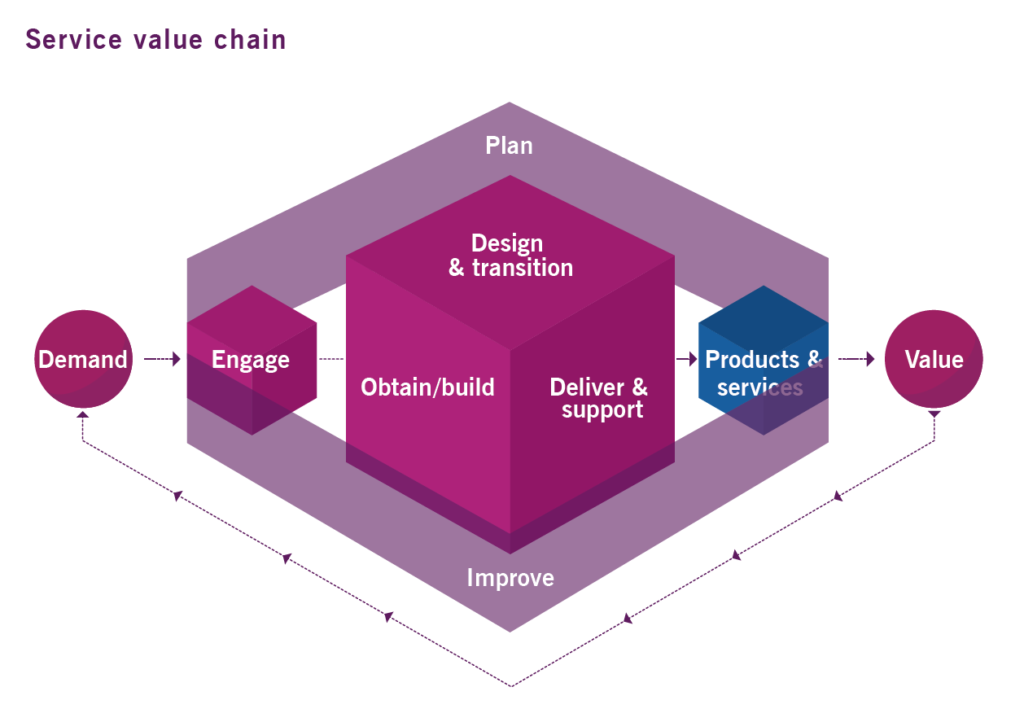The most recent version of ITIL, ITIL 4 introduced a lot of new concepts. In particular the concepts Service Value System, Service Value Chain and Value Stream. All these are fundamental in ITIL 4.
The Service Value System (SVS) is a model that shows how all components and activities of an organisation work together to create value. The Service Value System can help create a unique and strong direction for the organization. It defines the activities, workflows, controls and procedures needed to achieve the agreed objectives.

On the other hand, the value stream is a series of steps an organisation undertakes to create and deliver services and products to consumers. The Value Stream is different for every organisation and needs to be specified.
The new version of ITIL provides a generic reference model to be able to create value streams: this model is called Service Value Chain.
Service Value Chain
The Service Value Chain is an operating model, which outlines the key activities required torespond to demand and facilitate value realizationthrough the creation and management ofproducts and services. Each organisation will allocate the Service Value Chain according to their business needs. The SVC responds to the trigger, the question and the need for an organisation.
The six main activities of the ITIL Service Value Chain are;
- Plan
- Engage
- Design & Transition
- Obtain & Build
- Delivery & Support
- Improve.
In reality, the SVC needs other elements to be completed. Even if these elements are not part of the chain: the trigger, or the question, the need that the SVC responds to.
Every organisation will be able to define its specific Value Stream starting from the referenced Service Value Chain.

Value stream
Different factors are included while creating the value stream, like:
- Structure of the organisation
- The team
- The competences
- The organizational culture
All the above-mentioned elements either influence or determine how the Value Stream is defined.
Specific roles and responsibilities, resources and tools will be defined within the value stream. The Value Stream will represent how the organizational model will be used to respond to a specific trigger, need or question.
While creating a Value Stream with the Service Value Chain as a base, it is advisable to start from the demand. That way the end result is always a Value, regardless of the Value Stream that we are going to identify.
Other important facts about the Value Stream:
- The order of activities is not pre-established and can be different every time
- The Value Stream does not concern a single group but involves several teams
- The Value Stream activities do not only involve IT staff but also includes stakeholders
- Each activity of the value stream has specific support and stakeholder practices.
In order to create Value Streams, it is necessary to know the activities, define their priority and manage the possible involvement of external companies.
ITIL provides the Service Value Chain to identify the Value Streams. The organization always starts from the Service Value Chain and uses this model to identify the specific Value Stream. Once an organization has defined its Value Streams, it is easy to follow the activities and practices. It recognizes the stakeholders involved and the activities required to transform the need into something that generates value for everyone.
More information? Read on here about ITIL and the 7 ITIL guiding principles.
The Managing Professional module of ITIL 4; Create, Deliver & Support provides an understanding of how to integrate value streams. Activities to create, deliver and support IT products and services and related practices, methods and tools. Find out more!
QRP International also organized a webinar about the ITIL 4 module Create, Deliver & Support. Our trainer and ITIL 4 expert Kais Albassir explains in a clear way how this course can be helpful. Watch the recording for free by clicking here.
ITIL® is a registered trade mark of AXELOS Limited, used under permission of AXELOS Limited. All rights reserved.










